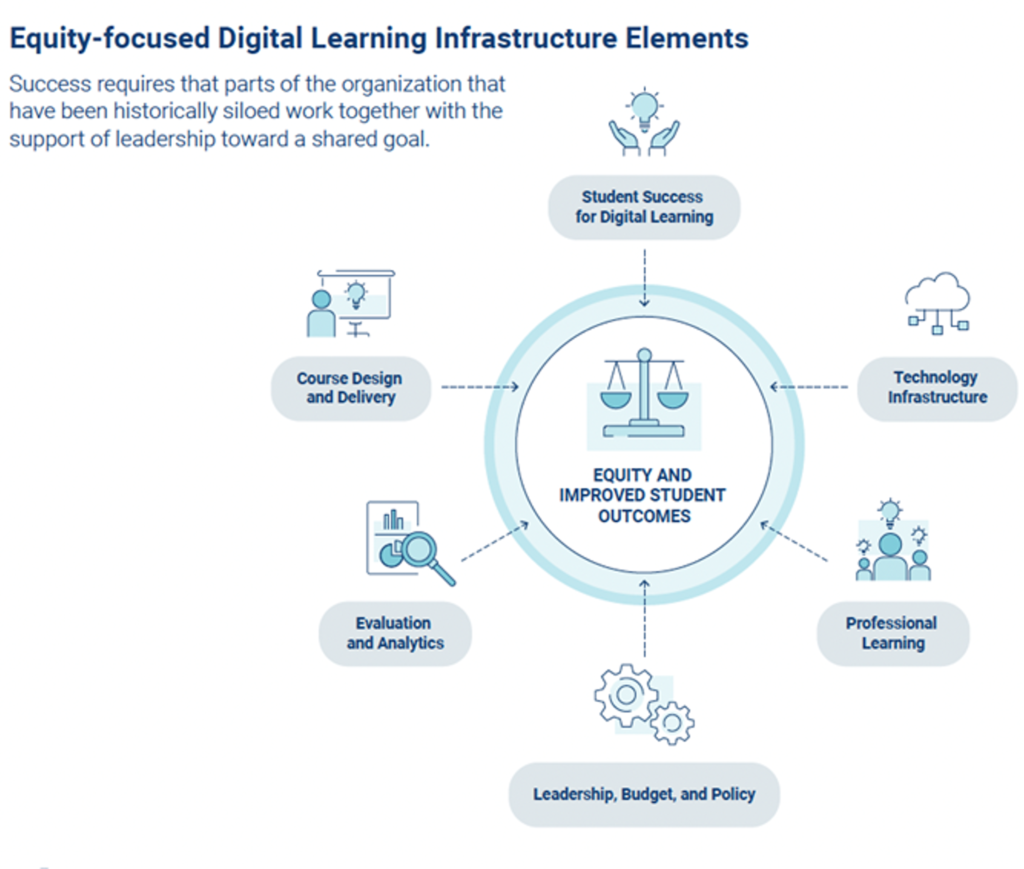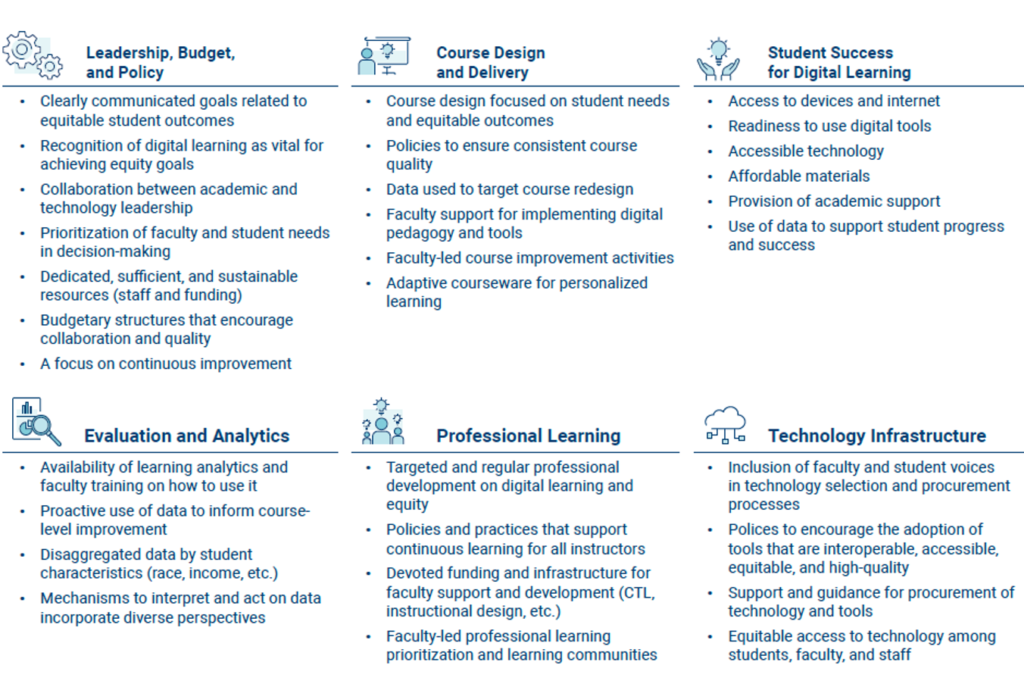Behind the scenes of Otterbein University’s partnership with Antioch University
June 10, 2025 BlogWe’re excited to launch Tyton Partners’ new interview series, Five for the Future: Spotlight on Transformative Institutional Partnerships….
The 2020 emergency transition to remote learning and subsequent ubiquity of courses delivered online has students wanting to hold on to the best parts of the digital learning experience, including flexibility in where and when they learn. Faculty, having used a broad range of digital tools and approaches, want to hold on to the digital pedagogies that they saw benefit their students, including the incorporation of asynchronous learning and the use of learning data to inform teaching. And institutions want to preserve momentum, with more than ¾ of institutional leaders reporting in our 2021 Time for Class survey, that they are investing in digital transformation and will increase the use of digital pedagogy in introductory-level courses. That said, two years into the pandemic, most of us probably agree it would be ok to the leave some of less great parts behind (e.g., constant synchronous zoom meetings).
We consider digital learning to be the use of technology and teaching practices enabled by digital tools to enhance learning. Digital learning – not to be confused with online learning – includes a broad range of content and communication tools, curricular models, design strategies, and student support services that personalize instruction for students in blended, hybrid, and online learning environments. Equitable digital learning adapts instruction to students’ needs.
When implemented well, digital learning can be a tool that supports better institutional outcomes including reduced costs of instruction and faster time to completion, creating more equitable access and outcomes for Black, Latinx, and indigenous students and low income students whom higher education has historically underserved.
Kristen fox
At the course level, leveraging digital learning components, such as interactive and individualized course materials, has the potential to enable active learning, empower instructors with data to inform teaching, and enable better student outcomes – as measured by increased grades, completion and decreased DFWI rates — in particular for Black, Latinx, and indigenous students and low income students.
However, if not implemented as part of a broader institutional investment that, for example addresses inequitable access to devices, Wi-Fi, and levels of digital literacy, digital learning can exacerbate gaps it is intended to close.
Thus, to support institutions in building digital learning infrastructure that is equitably designed, we recently developed a case-study based planning guide in collaboration with Every Learner Everywhere and APLU that details what can be learned from institutions who have made intentional investments in requisite infrastructure and that are producing positive results that are sustained, scaled and showing promise in closing student equity gaps.
An equity-focused digital learning infrastructure is not limited to technology infrastructure. As shown in the figure below, it includes leadership, sufficient budget and aligned policies; course design and delivery resources; student success for digital learning; ongoing evaluation and analytics to support continuous improvement; professional learning for all faculty and instructors; and technology infrastructure.

Within each of these areas, there are key markers to consider across the organization to ensure that your institution is aligned to create equitable student experiences, as shown in the figure below.

In order to build and achieve this equity-focused digital learning infrastructure, successful institutions rely on four strategies:
Take a read of the report summary and let us know what you think or contact us to talk about how we can help you plan for and execute on scaling an equitable digital learning future at your institution.